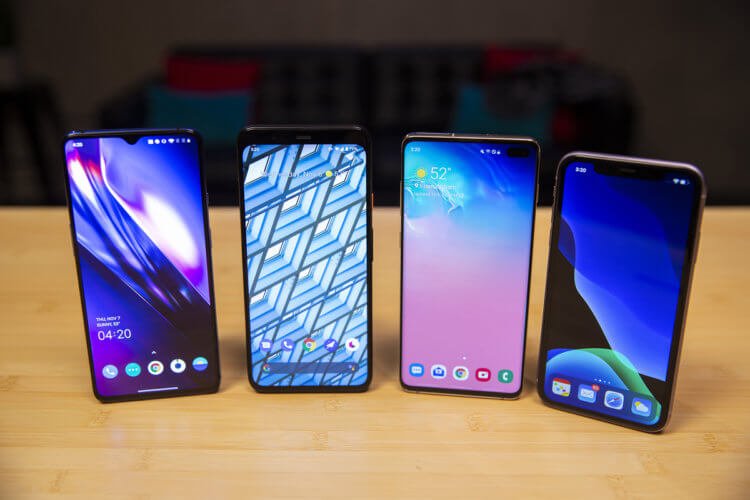Just do not think that we are trying to lead you on the wrong path. Let's just try to compare iOS with Android and see where iOS is superior to our favorite operating system from Google. I confess that there are moments in Android that cause questions for me and my colleagues from androidauthority. We will discuss them today.

How is iOS better than Android?
Optimization is still important
Let's start with the simplest. iOS really works faster and smoother Android – devices. The reason is probably because Android is being developed by the community. This is an Open Source project, so this is expected. The community is poor at working with interfaces. A good example of this Linux. Having installed Ubuntu not so long ago and using it for about a month, I came to the conclusion that it requires significantly more computer resources compared to Windows. Also, Ubuntu's interface seems less fluid and not as neat as in Windows. Does it make sense to say something then about Mac OS? Although it is similar to Unix systems, it works much better.
In iOS, the smoothness is also felt thanks to the high response rate of the screen – only 20-40 ms. Even gaming Android phones cannot offer this yet. ASUS developers had to change the kernel Android to make the screen more responsive. In addition, iOS animations are nicer and smoother, even with a 60Hz refresh rate.
iOS easy to use
It is difficult to disagree with this. The system is easy to understand and work with on a variety of devices. Users Android, purchasing phones from different manufacturers, are not always sure that they can easily get used to the new interface. Android is complex and varied, not easy to get used to. The mere fact that the user can scatter application icons on the screen makes the system in the hands of many users not very neat. In addition, the presence of various widgets that can be randomly located on the desktop also does not make Android clear and convenient.
Frequent updates are a plus iOS
Only Pixel smartphones receive frequent updates. It is a pity that this does not apply to owners of Samsung smartphones, Huawei and so on. Why long updates are still the norm for the market is not clear. Not so long ago smartphones Xiaomi began to receive the tenth version Android, although it was presented six months ago. In iOS, on the contrary, updates arrive immediately after the presentation on all smartphones that support it. Of course, only in beta status, but for many, this is not a problem either.
Secondary market value is high
It's no secret that smartphones Apple in the secondary market lose less in price. If the Galaxy S8 can be bought for 15-16 thousand rubles, iPhone X, presented in the same year, on Avito is estimated at 30-35 thousand rubles. The same applies to other Android – manufacturers. Currently, in the secondary market iPhone 7 can be purchased for 15 thousand rubles, it is unlikely that in 1-2 years the cost iPhone X will fall to this mark.
Apple CarPlay is better Android Auto
Car owners know CarPlay is significantly better than Android Auto. The car system Apple is more convenient to use. However, there is nothing to add here. We can further discuss this issue in Telegram.
What conclusions can be drawn from all this? Surprisingly, Android is not so bad compared to its main competitor, because it had very few downsides. As for the pluses, they can be said to be limitless, because Google gives complete freedom to developers. Android is an Open Source project, and in good hands you can mold something really cool out of it. The only question is who will do it. For example, manufacturers of gaming smartphones are adapting kernels for less responsiveness, offering some software features adapted for an improved gaming experience. In the case of iPhone, users are limited by the imagination and desires of one company, which may not always be narrowly focused. Apple trying to please everyone may not get hung up on many points, and this makes it impossible to give Cupertinos' products the flexibility that is inherent in Android devices.
